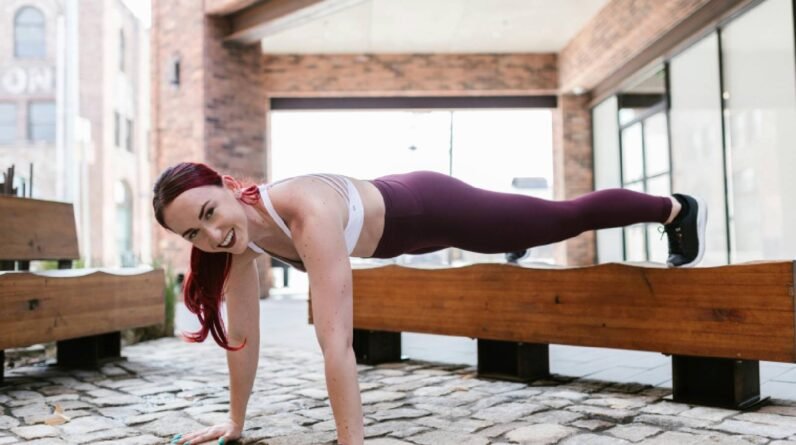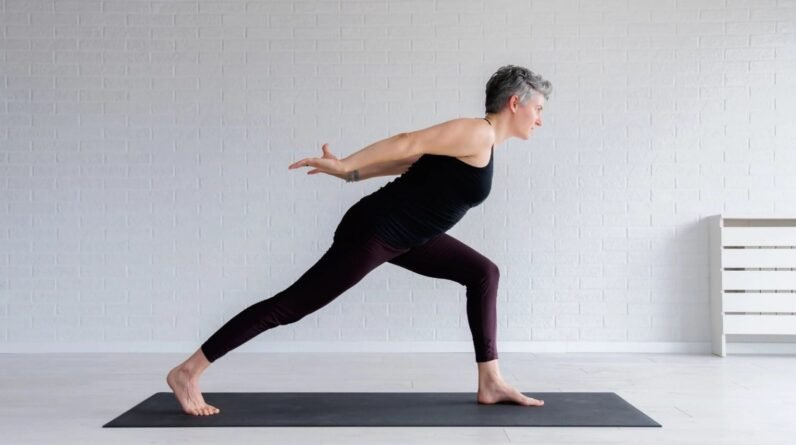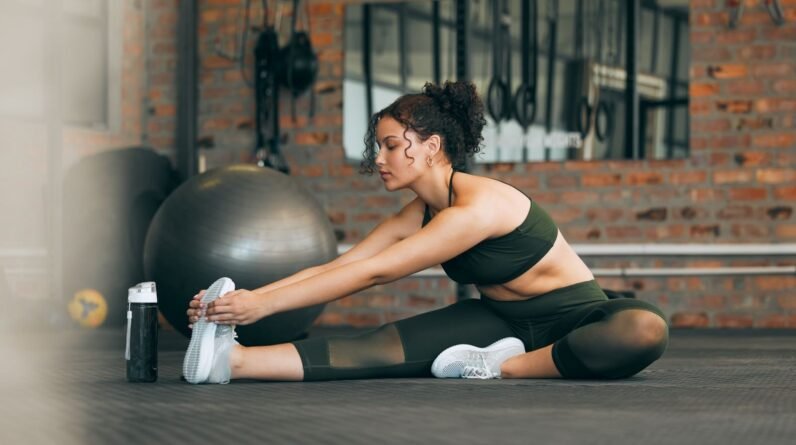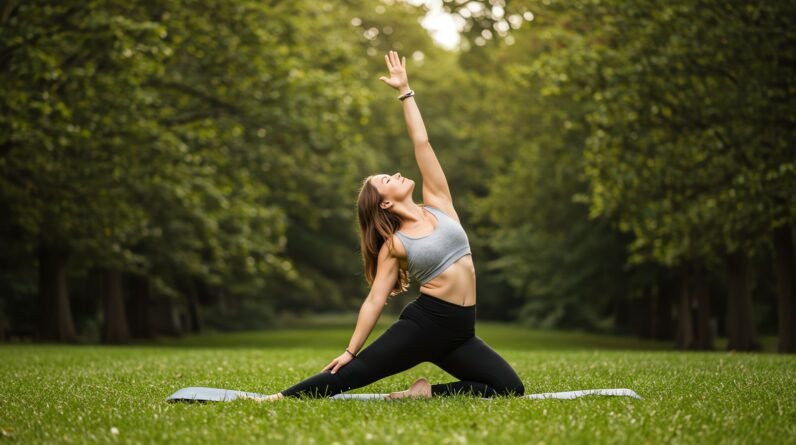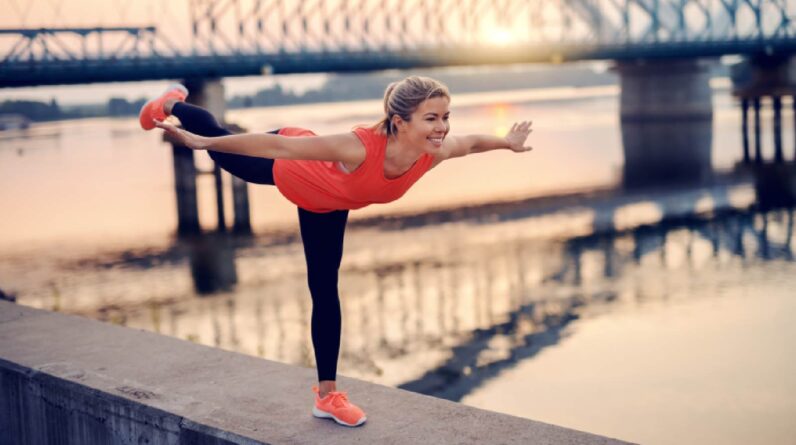
Improve your balance, and hip mobility by mimicking the motion of a flying airplane. Spread your arms, and balance on one leg to do the hip airplane exercise.
Squats and lunges may be your go-to exercises to strengthen your lower body. Add the hip airplane to this list to make your legs, and hips stronger. Your legs, and hips have to be in good shape, as they support your body, and keep you moving. This exercise, which involves spreading out your arms, and standing on one leg, can help to improve balance, and mobility of your hips. It may look like child’s play, but it is not that simple to do this exercise. Coordination failure can lead to a fall, and you can end up with injuries. That’s why it is important to learn how to do it properly.
What is the hip airplane exercise?
The hip airplane exercise is carefully designed for dynamic balance to enhance the strength and flexibility of the lower body. “This exercise, involving the leg and the hip, mainly focuses on improving the hip’s stability, balance and mobility,” says fitness expert Aman Puri.

It is performed by standing on one leg while balancing the body in a controlled manner. The movement and body posture imitate the motion of a flying airplane, earning it the name hip airplane exercise.
What are the benefits of the hip airplane exercise?
This balance exercise should be part of your fitness routine, as it has many benefits:
1. Improves alignment and posture
With the help of controlled rotation of the hips, this exercise helps in aligning the hips, pelvis area and spine. “This leads to a better aligned posture, and helps in overcoming the risk of lower back pain,” says the expert. You should work on your posture, as poor posture can increase mechanical stress in the lower back, and in turn, lead to low back pain, as per research published in EFORT Open Reviews in 2023.
2. Good for mobility of hips
“This exercise involves proper rotation of the pelvic and hip area, which helps strengthen hip joint muscles,” says the expert. It specifically improves the internal and external rotation of the hip and loosens tight hips, which can be a risk factor for musculoskeletal injuries in the lower extremities, as per research published in the Journal of Experimental Orthopaedics in 2021.
3. Better balance
The hip airplane exercise helps improve the body’s balance by involving muscles like the glutes, foot, core and hip muscles. “Proper coordination involving hip rotation or leg extension helps enhance neuromuscular control to create a balance,” says Puri.
4. Activates the core
The hip airplane exercise activates the core muscle, which helps control the required motion, providing stability while rotating. It tightens and strengthens the core, which encompasses the abdominal, pelvic floor, back, diaphragm, hip, and gluteus muscles. It connects the upper and lower extremities, according to research published in Biology Of Sport in 2023.
5. Helps prevent injuries
While working out with weights or gym equipment, you can easily get hurt. “This exercise can help prevent injuries, as it does not involve intense movements or weights,” says the expert. It can be done by most people, but you should be cautious while performing it.
You may also like


How to do the hip airplane exercise?
Here are steps to do this exercise:
- Stand using one leg and bend your knee slightly while spreading your arms out to the sides. Engage your core area to maintain a careful balance.
- Extend your other leg backward, and lean forward with a straight spine.
- Rotate your entire torso gradually outwards and keep your leg extended outward just like an extended airplane wing.
- Hold for a few seconds in the extended leg position.
- After that, move your hip back to the centre and move back to your starting position.
“If you find it difficult to perform this exercise, you can take help by holding a wall,” suggests Puri.

Common mistakes to avoid
Focus on controlled and coordinated movements while doing the hip airplane exercise. Here are some mistakes to avoid while doing it:
- Hip overrotation strain: Uncontrolled movements can lead to overrotation of the hip, which can lead to dislocation.
- Overbending back: Another common mistake is slouching the spine or overbending which can lead to stress on the knee or the hip joints.
- Loose leg positioning: Loosely placing the legs or letting them hang without stretching them completely won’t give maximum benefit as it does not activate the muscles, especially the hip muscles and glutes.
Who should avoid the hip airplane exercise?
It can be done by most people, but some may have to be more cautious:
- The elderly and beginners can perform this exercise with a supported variation as there is a risk of falling.
- Those with weak bones or have a history of past injuries should avoid performing this exercise or use support initially.
- People with chronic medical problems should consult a doctor before performing the hip airplane exercise.
The hip airplane exercise is perfect for your lower body. It does not involve high-intensity movement, so it can be performed by most people. But if you find it hard to balance, opt for a supported version to avoid any risk of falling.
Related FAQs
Which muscles does the hip airplane target?
Hip airplane mostly targets the glutes minimus, gluteus medius, maximus, and posterior hip muscles. These muscles play a crucial role in stabilising hip and leg movement. The gluteus maximus strengthens control of the hip joint. Gluteus minimus and medius support in stabilising pelvic movements while piriformis is the posterior hip muscle involved in maintaining balance and assisting in hip rotation. Foot muscles and core muscles are also involved during this exercise.
Is the hip airplane exercise good for seniors?
Yes, this exercise is good for the elderly if performed in the right manner using controlled movements. It can help improve the flexibility of hip joints, enhance coordination and balance, prevent hip and pelvic injuries among seniors, and strengthen the muscles of the hip and legs. Seniors can also perform this exercise without overexerting their body as it does not involve any high-intensity movements. As seniors have a higher risk of injury involving weights or intense training, this dynamic exercise can be easily performed without equipment.


